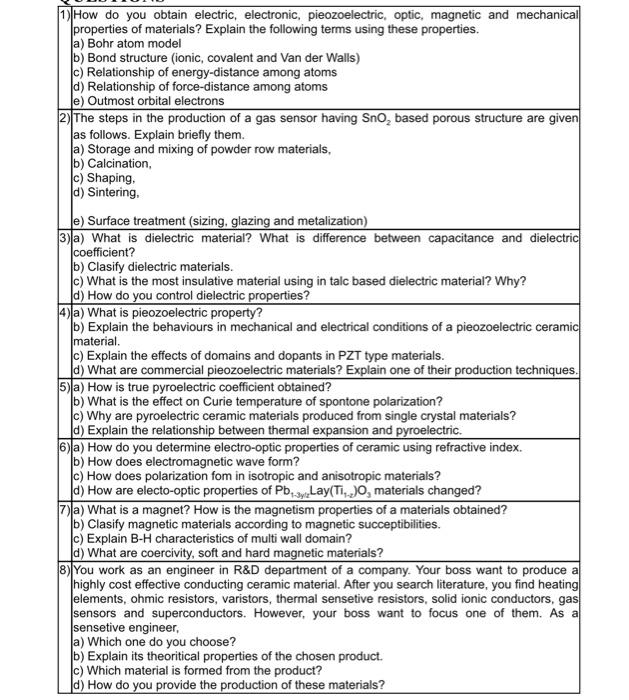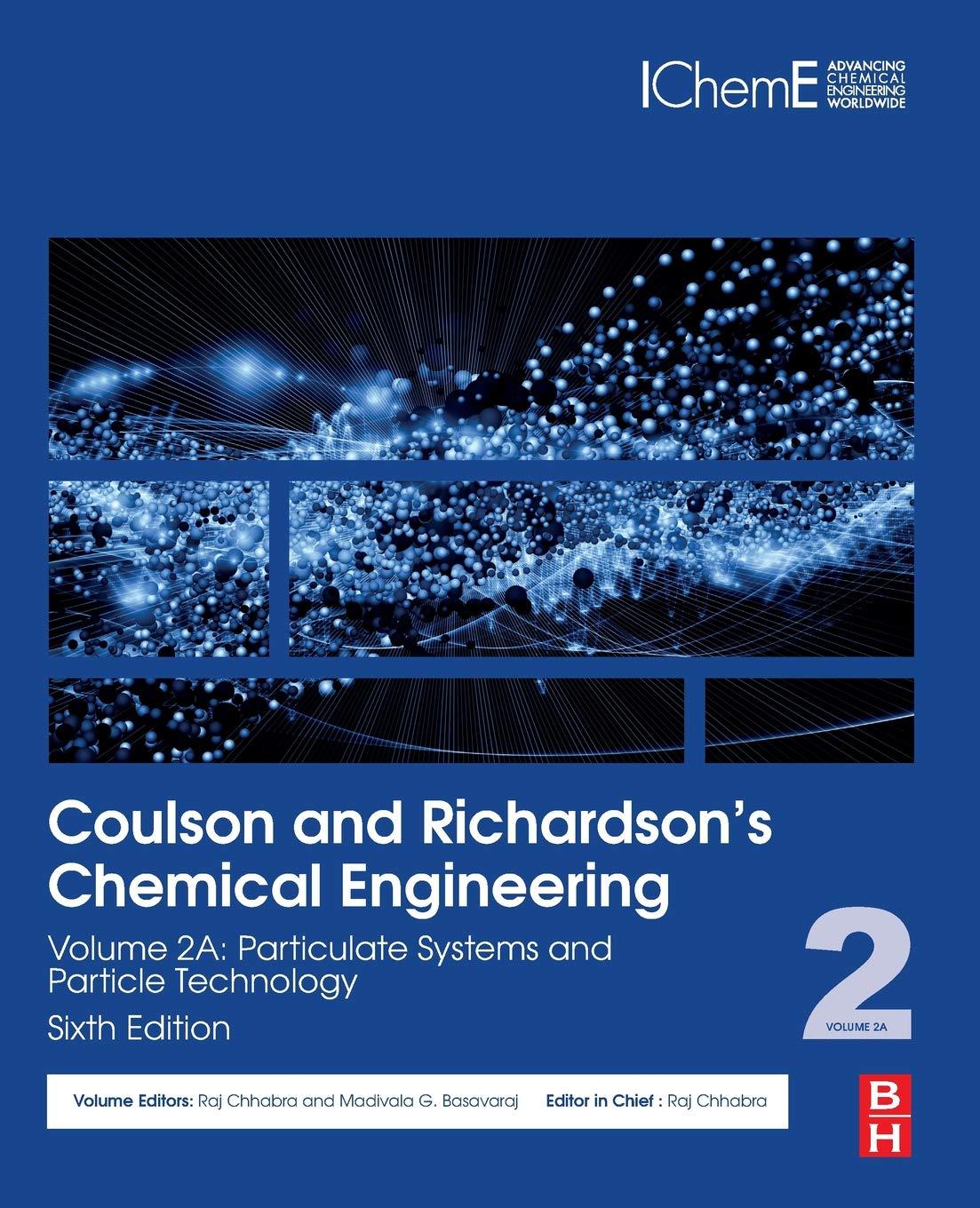1) How do you obtain electric, electronic, pieozoelectric, optic, magnetic and mechanical properties of materials? Explain the following terms using these properties. a) Bohr atom model b) Bond structure (ionic, covalent and Van der Walls) c) Relationship of energy-distance among atoms d) Relationship of force-distance among atoms e) Outmost orbital electrons 2) The steps in the production of a gas sensor having SnO2 based porous structure are given as follows. Explain briefly them. a) Storage and mixing of powder row materials, b) Calcination, c) Shaping, d) Sintering, e) Surface treatment (sizing, glazing and metalization) 3) a) What is dielectric material? What is difference between capacitance and dielectric coefficient? b) Clasify dielectric materials. c) What is the most insulative material using in talc based dielectric material? Why? d) How do you control dielectric properties? 4) a) What is pieozoelectric property? b) Explain the behaviours in mechanical and electrical conditions of a pieozoelectric ceramic material. c) Explain the effects of domains and dopants in PZT type materials. d) What are commercial pieozoelectric materials? Explain one of their production techniques. 5) a) How is true pyroelectric coefficient obtained? b) What is the effect on Curie temperature of spontone polarization? c) Why are pyroelectric ceramic materials produced from single crystal materials? d) Explain the relationship between thermal expansion and pyroelectric. 6) a) How do you determine electro-optic properties of ceramic using refractive index. b) How does electromagnetic wave form? c) How does polarization fom in isotropic and anisotropic materials? d) How are electo-optic properties of Pb13yz2Lay(Ti12)O3 materials changed? 7) a) What is a magnet? How is the magnetism properties of a materials obtained? b) Clasify magnetic materials according to magnetic succeptibilities. c) Explain B-H characteristics of multi wall domain? d) What are coercivity, soft and hard magnetic materials? 8) You work as an engineer in R\&D department of a company. Your boss want to produce a highly cost effective conducting ceramic material. After you search literature, you find heating elements, ohmic resistors, varistors, thermal sensetive resistors, solid ionic conductors, gas sensors and superconductors. However, your boss want to focus one of them. As a sensetive engineer, a) Which one do you choose? b) Explain its theoritical properties of the chosen product. c) Which material is formed from the product? d) How do you provide the production of these materials







